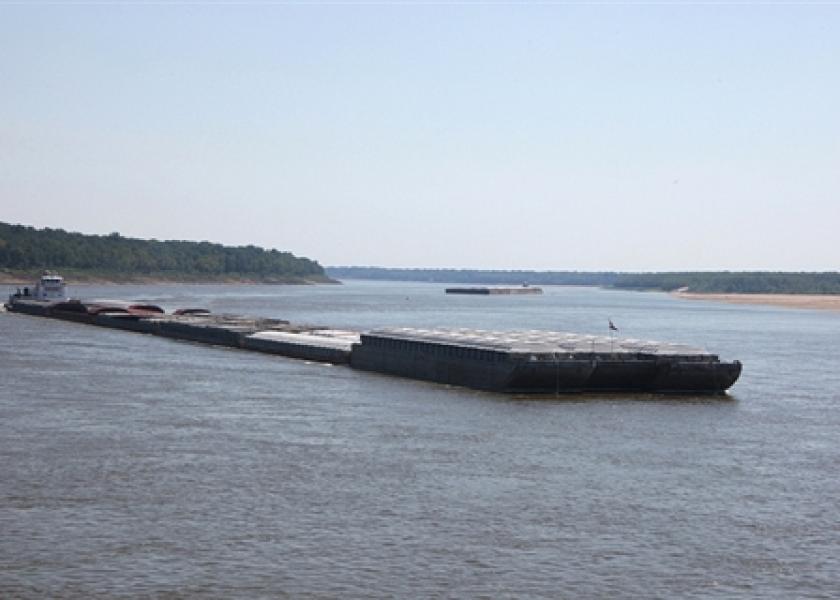Farmers Get a Bargain on Barge Rates

Farmers may be too distracted by the latest painfully low corn and soybean prices to notice it, but their grain shipments are enjoying a bargain on barge rates these days.
Last week, barge rates on the Mississippi River were quoted at $17.45/ton, which is 51% below the three-year-average, according to USDA-AMS. At Cairo, Ill., rates were even cheaper at $9.18/ton, which is down 66% from its three-year-average.
Analysts say U.S. barge rates are expected to remain below their historical averages well into 2016, which should take some of the edge off low commodity prices.
That's a plus for farmers, says Mike Steenhoek, executive director at Soy Transportation Coalition, with the low cost of freight providing some relief to farmers pinched by low commodity prices.
In a demand-driven market, shipping costs are often passed on to the buyer, Steenhoek explains. But, in a supply surplus scenario, transportation costs are passed to the sellers.
“Farmers are the ones who bear the brunt of transportation,” he explains. “You don’t have the luxury of just passing those costs on to customers. When you’re in a demand-pull market, you could just simply say, well hey, there’s more demand chasing supply, and so we’ll just pass those costs on to the customer in China, for example, and you can get by with that. We’re not in one of those eras right now, so farmers will be paying a little more for that when they do actually elect to sell.”
While the low freight rates help encourage exports, the strength of the U.S. dollar is making U.S. products more expensive on the export market and slowing demand for barges, he adds, which is keeping freight rates down.
“Overall, our export program has weakened, and it’s anticipated that will continue to weaken, given the strength in the dollar, the devaluation of the Brazilian real, which is applicable to corn, but even more so for soybeans,” Steenhoek says. “And so, as you would expect, there’s not as much being transported over our transportation system.”
Shipments of other commodities such as sand and fertilizer have also slowed on the U.S.’s river network, according to Ken Eriksen, transportation analyst at Informa, speaking Market Rally with host Chip Flory on Nov. 2.
As a result, there’s greater barge availability to move agricultural commodities at a cheaper rate. “We don’t have as much fracking sand moving this year," Eriksen said. "We've got a little bit more covered hopper fleet out there."
Cheap Rates No Guarantee
As Steenhoek looks ahead, he remains concerned about the lack of farmer selling--and the logistical challenges if the market shifts abruptly, prompting farmers to finally unload all that stored grain at once. “The concern I have is if there is some kind of market signal that prompts farmers to sell,” he explains. “Will that be at a time when all of a sudden winter weather is not agreeable to transporting significant volumes? Will that coincide with a snow storm?”
Weather disruptions in Brazil could also disrupt corn and soybean movement and could abruptly send more business to the U.S., since Brazilian ports lack facilities that allow loading of barges in wet weather, according to Steenhoek. He says that wet weather related to El Nino increases those chances.
Eriksen agrees that while the long-term outlook is for barge freight rates to remain low into the first half of 2016 amidst ample supply of barges, there are outside possibilities for freight rates to rise if demand for other commodities were to suddenly jump. “[If] we get a bad winter and you need a lot more salt, we could really see some of that change pretty quick,” he said.







